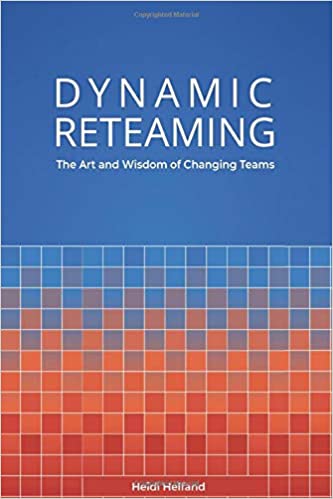A newsletter that started as a personal learning and getting-in-touch project by Ivan Krnic grew into a sociotechnical newsletter covering topics of technical excellence, organizational improvements, and productivity.
Consultant collaboration
Running a successful organization is not an easy feat. You need to get many things right: the business problem, the solution for your users, the right technology for the job, and the right methodology to tie everything together. Missing only one of these can put an organization into trouble.
Not all organizations have all of these skills so it’s only natural for them to look for help. Consulting companies have been there for ages to provide such support. Although it seems like a match made in heaven, these collaborations between client companies and consulting companies can go away.
Fortunately, there is a consistent pattern of behaviors that make collaboration successful. Through her huge experience collaborating with consulting companies, Courtney Kissler (@chawklady) recognizes following patterns as crucial for successful collaboration:
1. create a win-win for your company and the consulting company
2. ensure the consulting company truly understands your business and problem
3. be committed, ensure you have the internal people ready to partner with the consultant
Working for years on the consulting side, I can only applaud the simplicity of these rules and confirm how true they are. Looking in hindsight, whenever problems occurred in the collaboration, some of these behaviors were not in place.
Listen to the whole conversation with Courtney where she describes these behaviors in more detail – look up 0800-DEVOPS podcast in your favorite podcast directory and sign up.
The relationship between client organizations and consulting organizations is a collaboration. These patterns ensure that expectations are met and that both parties have enough information and autonomy to bring their best to the table.
Interview of the Month

Collaborating with consulting companies
Courtney Kissler is CTO at Zulily, an e-commerce company. She has an impressive career in the retail space as former Vice President of Digital Platform Engineering at Nike, and before that, she helped in building digital platforms at Starbucks and Nordstrom. Don’t miss our conversation – Courtney is describing her recipe for successful collaboration with consulting companies.
The cognitive load is the resident evil in organizations today! It shreds our focus and slows down the flow of value. Fortunately, Team Topologies offers a recipe to overcome it by forming the right structure of teams and establishing the right team interactions, thus supporting DevOps way of working.
Download CROZ case study and check out how Team Topologies helped us achieve a better flow of value and keep technology in check.
Hand picked
DevOps and Cloud InfoQ Trends Report – Take a look at the current adoption level of many concepts that make out a cloud-native ecosystem today. Cloud-native is not only about tools, as Dr. Holly Cummins (@holly_cummins) writes in Cloud-Native Is about Culture, Not Containers….“It is possible to be very cloud-native without a single microservice”
The Cost of Cloud, a Trillion Dollar Paradox – Yes, the cloud is great and all, but once your company grows very large, the cost of cloud starts to contribute significantly to the company’s total running cost. So much so that Dropbox reported $75M in cumulative savings over the two years by “repatriating” the majority of their workloads. This leads to what authors call The paradox of cloud: “You’re crazy if you don’t start in the cloud; you’re crazy if you stay on it.”
Agile in the Cloud Native Era – Every innovation has its fuzzy end that all dread, especially engineers that are used to deal with well-defined problems and straightforward solutions. It’s important to understand that the “fuzziness” (uncertainty) stems from various unvalidated and often contradicting ideas and thoughts. On the other hand, the process of validating these ideas is known and codified. As Jamie Dobson (@JamieDobson) says, “it is our ideas that are fuzzy, not the process itself.” Stick to the process during your cloud native transformation or any other innovation development.
Monitoring and Observability – Sometimes these terms are used interchangeably but Cindy Sridharan (@copyconstruct) explains the difference and why we need both.
Turning Microservices Inside-Out – Facing the hype of event streaming and radically replacing all databases with event logs, Bilgin Ibryam (@bibryam) argues for a more reasonable approach of complementing traditional databases with Apache Kafka when designing microservices.
Read with us

Dynamic Reteaming: The Art and Wisdom of Changing Teams
Teams have long ago become the basic building blocks of every successful organization.
We have been taught that long-lived teams perform best. But what if you can’t have long-lived static teams? What if you need to change your formation?
Dynamic Reteaming by Heidi Helfand (@heidihelfand) provides patterns to apply when changing your team formation to better address business needs. It’s not like we should change team formation every day, but we also shouldn’t dread the change when it brings value. Dynamic Reteaming shows us the best way to do it.



